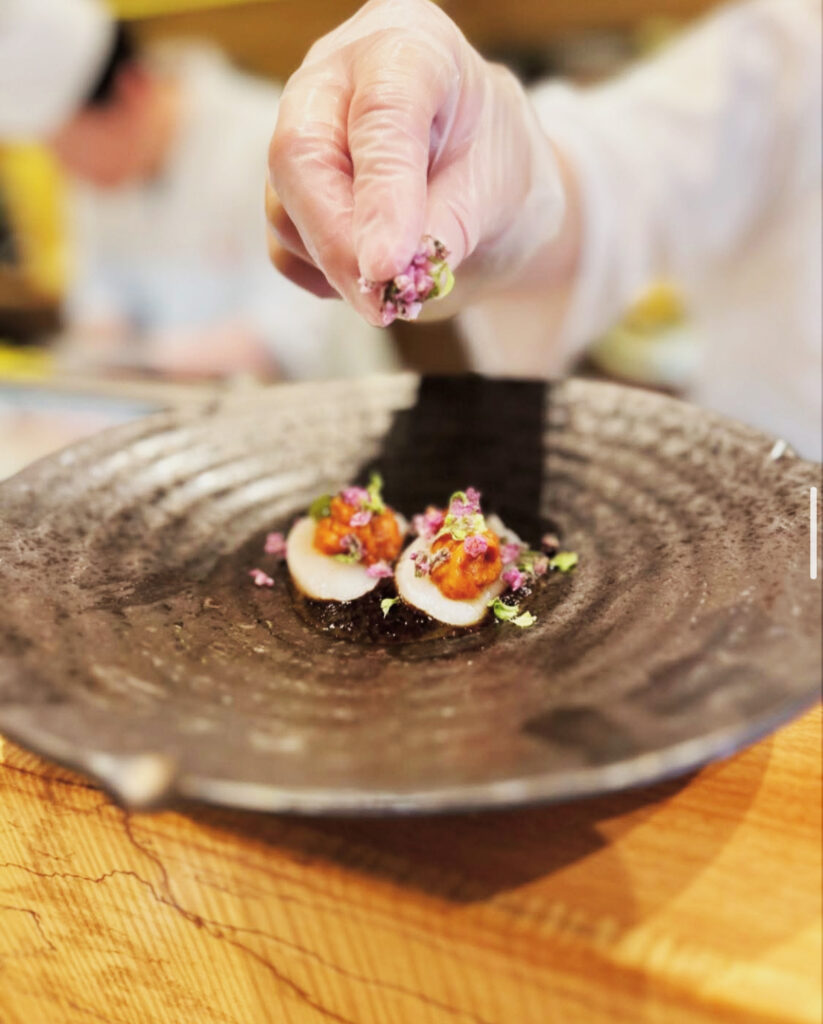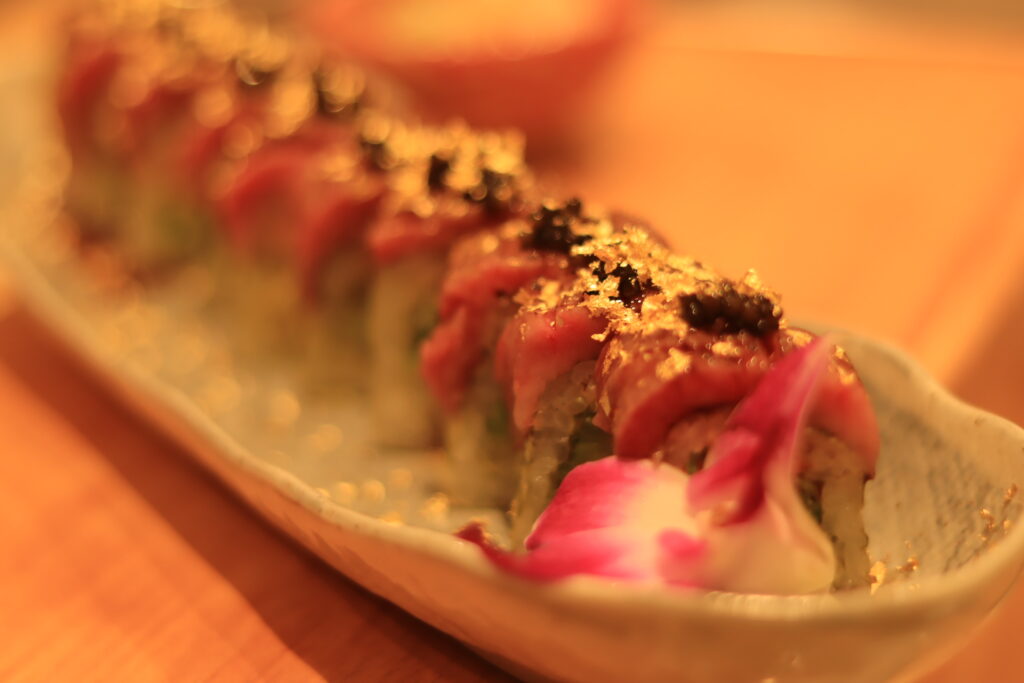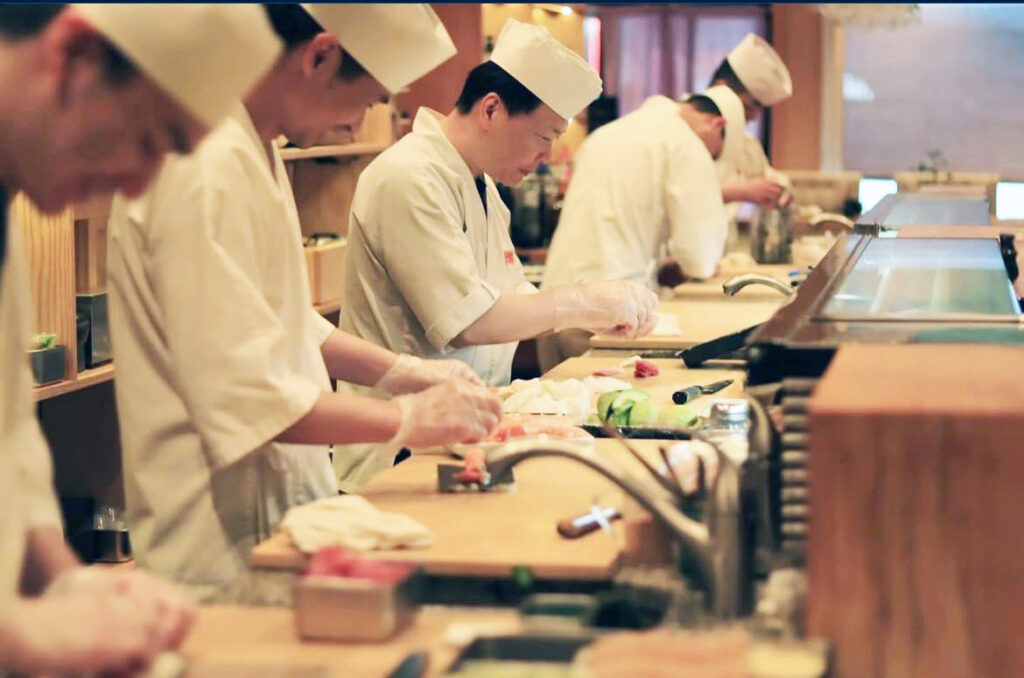How Ninja Sushi and Hibachi Became a Destination for the Best Sushi in Northeast Ohio
By Rebecca Meiser
It’s not exactly the place where you’d expect to find the best sushi in Northeast Ohio.
Tucked in a small strip in Mentor-on-the-Lake—between a rough and tumble biker bar and a convenience store selling Ohio cheap beer—Ninja Sushi and Hibachi, which imports fresh fish from places like California and Japan multiple times a week, is unassuming. Though it now attracts a reliable crowd, when the restaurant first debuted 11 years ago as a five-table establishment, it was located right next to a tattoo parlor.
“No one knew this area as a place for restaurants,” recalls coowner Nancy Lin. “And our name was Ninja [which is often associated with tattoos], so people came in all the time thinking we were the tattoo store.”
Those first months, “we were just waiting, waiting, waiting” for customers to come.
But today—sparked in large part by a crowd of East Side Jewish residents who frequent
the hidden gem, as well as by word-of-mouth and a big renovation—the place is bustling.
“Honestly, today I can’t go there without seeing other East Side Jews there,” jokes Adam Weiss, a 38-year-old sales executive from Pepper Pike. “It’s kind of become a gathering spot for the community.”
It’s not hard to see why. With melt-in-your-mouth black cod and innovative dishes like yellowtail sushi topped with pickled jalapeño and mayo, Ninja off ers some of the best-quality sushi around.
“I get it,” Weiss says, about why people are willing to travel the 40 minutes to Mentor, sometimes twice a month. “Good sushi is hard to do. And they’ve nailed it.”
For a long time, though, the location was kind of a secret— known only to a few lucky insiders. “Two years ago, [my wife Shira and I] fi rst heard about it from our friend, Danielle. She told
us, I know you like sushi. If you like Ginko, you’ll love this place,” says Jeremy Tor, 41, a lawyer from Pepper Pike. “Our expectations were set very high.”
“For reference, I’ve had Nobu sushi in New York and Las Vegas. I wouldn’t say I’m an expert, but my frame of reference is super high-end.”
But weaving past bikers in spiky leather jackets, “we were like, where are we?” says Shira Tor, an orthodontist. From the outside, it didn’t exactly look like a place that would serve such high caliber sushi.
Inside, though, was a diff erent story: a bright, airy space with an open kitchen and freshly imported fish—gleaming like jewels—displayed in a glass case at the bar. Chefs in white hats and robes stood behind the counter, armed with knives as sharp as swords. Rows of sake bottles, backlit on a six-level shelf, added to the refi ned atmosphere.
So they ordered—then kept ordering. Dishes like the Pink Lady Roll, with salmon, tuna, yellowtail, and mango, and the Mango Lobster King Roll, made with spicy kani, tempura lobster, avocado, and drizzled with a sweet, savory mango sauce. A perfect blend of both crunch and flavor.
“It was some of the freshest, tastiest, most delectable sushi we’ve ever had,” says Jeremy. “Usually, you go to a decent place, and the salmon is pretty good, but the other fi sh is just so-so. Here, everything was A-plus quality.”
“It was like butter,” adds Shira. Since then, they’ve been regulars, even twice ordering the omakase with friends for Shira’s birthday. In Japanese, omakase means “I’ll leave it up to you,” where chefs select the rolls—like the aka-taki maki with o’toro (the fattiest cut from the inside of a tuna belly), and topped with salmon roe, or the Miyazaki maki with king crab and avocado, crowned with wagyu caviar and gold flakes. Jeremy has become enthusiastic recruiter for the place —though Shira admits, “I’m not thrilled when Jeremy tells everyone about it.” The secret lies in the talent behind the sushi counter. Lin’s husband, Ken Chen, trained for 21 years under a sushi master in New York (she prefers
not to say where, noting only that it was a“well-known” place that has since closed).

Small in size, bold in fl avor—Kumamoto oysters are elevated with a wasabi balsamic and a pop of salmon roe.

Decadence in every bite. The Miyazaki Roll pairs A5 wagyu with king crab, avocado, gold fl akes, and caviar.

The open kitchen at Ninja Sushi lets you watch masters craft some of Northeast Ohio’s best sushi.
Eleven years ago, the Chinese couple, who met working at a restaurant in New York, moved to Mentor, where they had family, and opened a small, no-frills spot. “It’s hard to stay in business a long time,” Lin says. “So we thought if we chose a small space, it would be easier [financially] to make it work.”
The focus was originally takeout—just five tables with two chairs each. But Lin wanted more for her husband. “You know how to make good sushi,” she told him. “Really beautiful sushi.
I don’t want you wasting your talent just putting it in takehome boxes. I want you to show everybody.”
Slowly, they expanded their hours and seating. And though they didn’t advertise, word got around.
One customer, David Templin, a contractor who also taught tai chi at the Mandel JCC for 10 years, remembers seeing the sign when it first went up but waiting a few months to check it out. Now, he’s a regular every Friday. “To get as good of a sushi, I’d have to go to Japan,” he says. When Ninja was closed
for renovations four years ago, it was “some of the hardest Fridays of his life,” he adds.
The secret isn’t just the shipments of fresh fish from Japan. It’s also Chen’s skill—his precise cuts, his ability to bring out the delicate flavors and textures of each piece. It’s the rice, too. “It’s not too sticky or mushy,” Lin says. “When you eat it, it holds its shape.”
Four years ago, when the tattoo parlor next door closed, they seized the opportunity to expand and renovate. Today, the restaurant features a 12-seat sushi bar, a dining room that can accommodate 86 guests, and a full bar. (They’ve also added an extensive hibachi menu.) That’s when the exterior
finally began to match the quality of what was happening inside—and when the crowds really started coming. “We get a lot of people from Beachwood,” Lin says. “I see the same faces. I ask them why they come, and they say because the quality is so good and we’re so friendly. They bring friends from out of town—even from other countries.” The fish—featuring cuts like glistening otoro, jewel-like hirame, and seasonal delicacies—is a work of art. Each piece is harmonious, umami-packed, and a testament to Chen’s craft.
The only downside? Parking.
“It can be hard to find spots,” Lin admits. “And the neighbors even have handwritten signs that say, ‘No parking for Ninja.’ I don’t think they like us too much,” she adds with a laugh. For now, though, they’re staying put right where they are— but Lin dreams of one day opening a location in Beachwood.
“That’s my dream too,” says Jeremy Tor.
